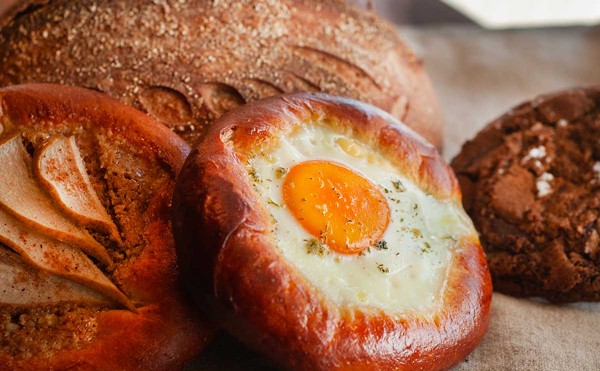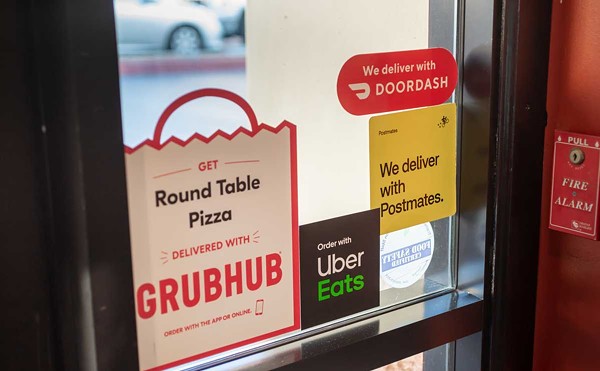The desire usually starts with some kind of revelation. Mine was in the early '90s at a tattoo parlor on Spain's Costa del Sol, where an old, salty machinist with a bottlebrush moustache brought me a glass of roasty Guinness Extra Stout to sip on while I was being inked. He had hoped to make my face pucker with a shock of flavor unlike that of any mass-produced American beer I had been drinking up until then. The opposite happened.
Just like that, a vast world of beer appeared before my eyes — and I spent the next dozen years trying hundreds of diverse brands and styles of beer, everything I could get my hands on, the journey peaking with a half-liter hoist to the oompah band playing "Take Me Home, Country Roads" to an international crowd of thousands partying underneath the grandest beer tent in the world at Bavaria's Oktoberfest.
The next natural step was to brew my own.
Ever since civilization's founding members discovered that soggy grain would eventually ferment into an intoxicating gruel, man has been brewing beer at home. For millennia, brewing was mostly a domestic pursuit, first with the Egyptians and Mesopotamians, on to the Greeks and Romans, and eventually into medieval Europe, where alewives served thirsty villagers, and nearly everyone drank beer — because it was safer than water.
Homebrewing in the United States was fairly common in the colonial era until thousands of commercial breweries popped up during the Industrial Revolution. It saw a short gain in popularity again during Prohibition, when breweries were no longer able to sell beer, though some, like Detroit's own Stroh's Brewing Company, stayed alive in part by selling cans of hop-infused malt syrup for baking purposes (wink, wink).
In fact, homebrewing was illegal then and stayed illegal until Congress signed a bill in 1978 allowing states to drop restrictions on homebrewing. Today, most states permit households 100 gallons of beer per person for personal consumption, except, of course, Alabama.
About five years later, nuclear engineer Charlie Papazian would pen The Complete Joy of Homebrewing, for years the only mass-market volume to present detailed information on brewing small scale in your home and eventually known to fervent do-it-yourselfers as the "Homebrewing Bible." Though not without its pages of technical charts and data, Papazian advocated a laid-back approach to brewing and, above all, to "Relax. Don't worry. Have a homebrew." These days, there's no shortage of books on the subject, but you'll still find fans of Papazian's tome crafting batches of "Goat Scrotum Ale" from the recipes section.
Through the '80s and '90s, tens of thousands of zealous homebrewers discovered that beer didn't have to be the watery yellow swill the macrobreweries were pushing, and they promptly shouted this declaration to all their friends through a bullhorn. It wasn't long before the demand for better, more flavorful beer spurred the craft brewing revolution. After all, homebrewers are also great consumers of beer, always looking to taste something new, perhaps with a clever name and a bit of history attached.
This was a time when scores of brewpubs and microbreweries were being started, many by homebrewers. Seriously passionate folks like Larry Bell, who founded Kalamazoo Brewing Company as a homebrewing supply shop in 1983. It's now known as Bell's Brewery and you can find a six-pack of Bell's in just about every beer store in Michigan and gas stations too.
It doesn't take much to become a homebrewer, other than a nagging desire to craft your own versions of the world's best beers — and a few pieces of relatively inexpensive equipment. At the most elementary level, it's possible to brew a batch of beer with only a large stockpot, a can of hopped malt syrup similar to what Stroh's sold during Prohibition, a small packet of dried ale yeast and a plastic bucket to ferment it all in.
Most who catch the fever will be ever-expanding their equipment. It will start with minor things, like bottle-cappers and immense stir spoons that will have you looking like one of Macbeth's witches at the cauldron. Six-gallon glass carboys with airlocks will reduce the risk of contamination by outside microfauna. An old cooler can easily be converted into a small "lauter tun" that will allow you to use cracked barley grains instead of malt syrup.
Once you move from malt syrups to an all-grain system of brewing, you can easily make quality, high-octane and tasty brews for a fraction of the cost of commercial beers. A little careful planning and it's possible to bring costs down to around $2.50 per six-pack. Some brewers will even go as far as creating dispensing systems out of old refrigerators and soda kegs, foregoing the bottling stage altogether. These people always have ample supplies of homebrew and easily make good friends.
Homebrewing isn't limited to just beer. Michigan grows apples aplenty; during harvest season it's easy to find mills pressing unpreserved and unpasteurized juice, usually containing enough natural yeast to begin fermenting of its own accord and producing a dry, tasty cider. Fresh grape juice is a little harder to come by in this region, but homebrew supply shops sell a wide variety of concentrates, if making wine is more your speed. And then there is mead, or honeywine, the drink of Greek gods and Anglo-Saxon heroes. Honey is a near perfect vehicle to ferment with all sorts of fruits or spices.
There are so many reasons to brew your own: a deep connection to your ancestors, cost savings, the ability to tweak recipes to your taste or merely getting your friends drunk while bragging about your own skills. Is there a more righteous hobby? The only question is where and when your revelation will appear.
For brewing supplies, literature and advice, visit these local homebrew supply shops:
Cap and Cork
16812 21 Mile Rd., Macomb;
capncorkhomebrew.com
Adventures in Homebrewing
23869 Van Born Rd., Taylor;
homebrewing.org
Brewing World
5919 Chicago Rd., Warren;
kbrewery.com





